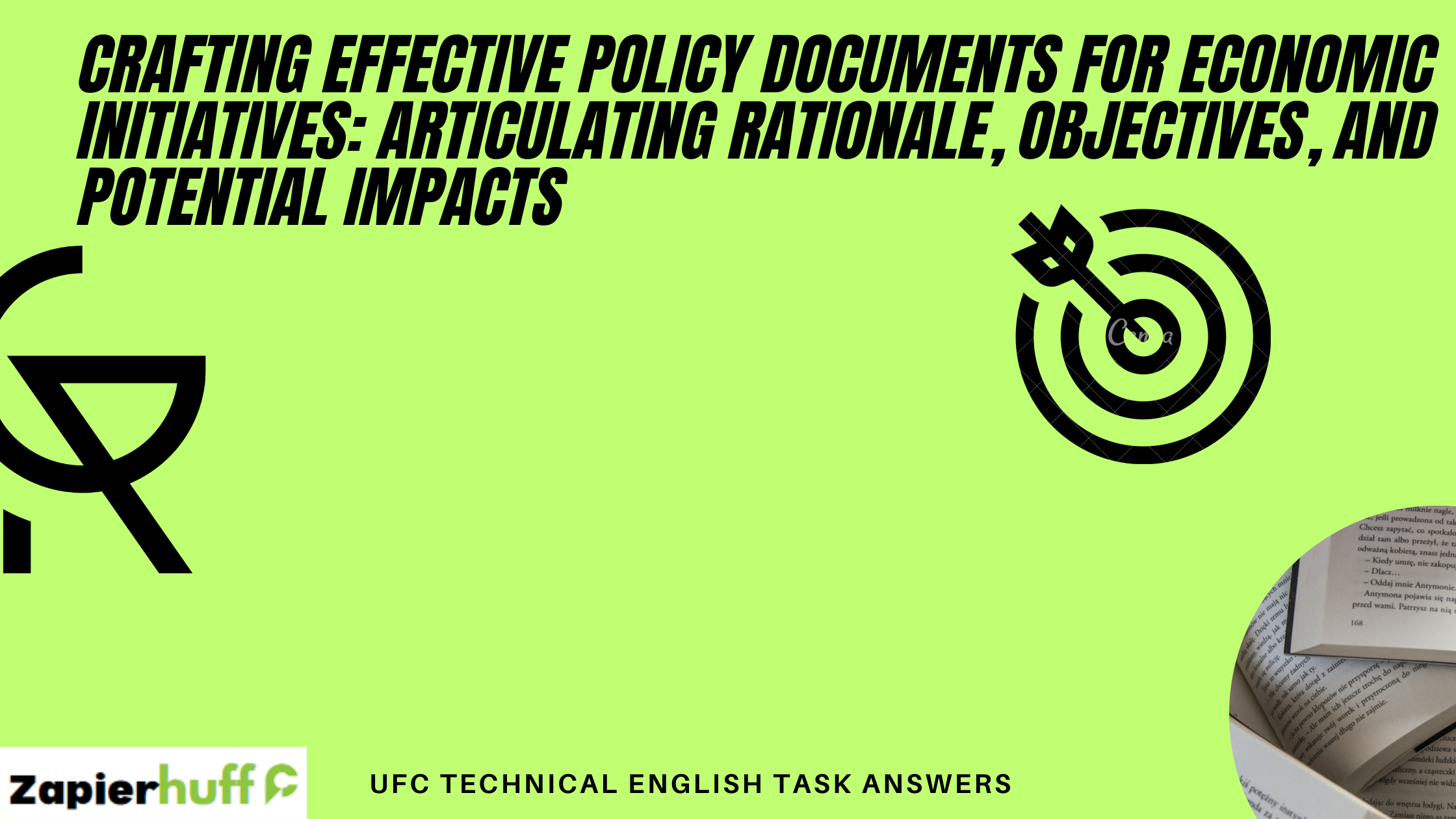Introduction:
In the dynamic landscape of economic development, effective policy documents play a pivotal role in shaping and guiding initiatives. These documents serve as roadmaps, providing a comprehensive understanding of the rationale behind proposed economic initiatives, outlining clear objectives, and forecasting potential impacts. In this blog post, we delve into the art of writing policy documents related to economic initiatives, exploring the crucial components that contribute to their effectiveness.
Section 1: Understanding the Rationale
Every economic initiative must have a solid foundation grounded in a clear rationale. This section focuses on the importance of understanding and articulating the underlying reasons behind a proposed initiative. Whether it be addressing specific challenges, capitalizing on emerging opportunities, or aligning with broader economic goals, a well-defined rationale sets the stage for a coherent policy document.
1.1 Identifying Key Issues:
Begin by identifying the key economic issues that the initiative seeks to address. This may involve analyzing current economic trends, assessing market demands, or evaluating the competitive landscape.
1.2 Aligning with Economic Goals:
Demonstrate how the proposed initiative aligns with broader economic goals, governmental priorities, and strategic plans. This alignment enhances the initiative's credibility and positions it as an integral part of the overall economic development strategy.
Section 2: Setting Clear Objectives
Once the rationale is established, the next critical step is to set clear and measurable objectives. This section explores how to define objectives that are specific, measurable, achievable, relevant, and time-bound (SMART).
2.1 Specificity and Clarity:
Specify the desired outcomes of the economic initiative with clarity. Whether it's job creation, industry growth, or increased exports, the objectives should leave no room for ambiguity.
2.2 Measuring Success:
Develop a framework for measuring the success of the initiative. Identify key performance indicators (KPIs) and metrics that will be used to evaluate progress over time.
2.3 Alignment with Stakeholder Interests:
Consider the interests of various stakeholders, including businesses, communities, and government agencies. Aligning objectives with these interests fosters collaboration and ensures a more inclusive and sustainable economic initiative.
Section 3: Predicting Potential Impacts
An effective policy document should provide a realistic and thorough assessment of the potential impacts an economic initiative may have on various stakeholders and the broader economy.
3.1 Economic Impact Analysis:
Conduct a comprehensive economic impact analysis to forecast how the initiative will influence factors such as GDP, employment rates, and investment levels. Use modeling and forecasting tools to present data-driven projections.
3.2 Social and Environmental Considerations:
Address the social and environmental aspects of the initiative. Consider potential effects on communities, cultural heritage, and the environment. Articulate strategies to mitigate negative impacts and enhance positive outcomes.
Conclusion:
In conclusion, writing policy documents for economic initiatives requires a thoughtful and strategic approach. By clearly articulating the rationale, setting SMART objectives, and predicting potential impacts, policymakers can create documents that serve as invaluable guides for successful economic development. These documents not only communicate the vision of the initiative but also build trust among stakeholders and lay the groundwork for a resilient and sustainable economic future.






